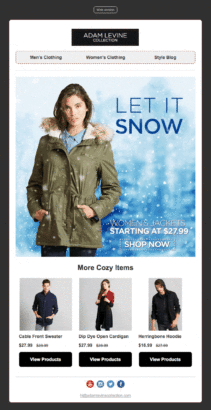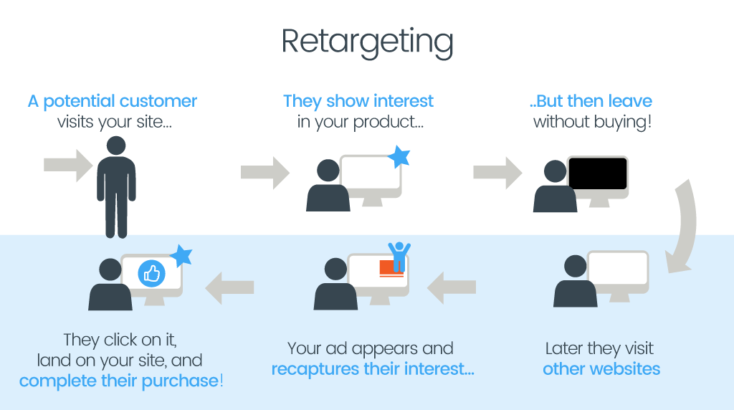The one thing about internet users becoming increasingly common these days is their growingly limited attention span. With practically a hundred businesses offering them similar products or services, they are spoilt for choice, and no one is to be blamed.
But another negative effect of this user behavior is the increasing challenges in user acquisition and retention. Be it an e-commerce website or a media blog that publishes football-related news daily, there is no guarantee that the user comes back to the same site the next time he/she is looking for something.
Wish someone could demystify powerful Conversion Rate Optimization Strategies? You can follow the link to our latest webinar and download a free presentation on maximizing sales (up to 10x) with CRO.
What is the way out of the ‘poor’ or ‘no’ conversion rate?
You could keep running advertisements to promote your website or keep boosting a post on social media to remain on your target audience’s feed constantly. But for all practical reasons, just how long could you continue doing this?
Your solution—conversion optimization.
Conversion Optimization: A Definition
Wikipedia has nailed the definition of the term by defining it to be-“In internet marketing, conversion optimization or conversion rate optimization (CRO) is a system for increasing the percentage of visitors to a website that converts into customers, or more generally, takes any desired actions on a webpage. It is commonly referred to as CRO”.
So, the conversion rate is just another word for making a sale.
Whenever someone decides to buy from you—it is counted to be a conversion. For example, if someone visits your Twitter account and ends up following, it would be called a conversion. Or, someone visiting your landing page and signing up for your email list could also be a conversion.
Depending on your business goals, a “conversion” could be almost anything. Here are some customer actions that are labeled as conversions:
- Making a purchase
- Submitting a form (contact us form, lead gen form, etc.)
- Calling your business
- Engaging with your online chat
- Signing up for a subscription (either paid or free—like a newsletter)
- Registering on the site
- Downloading something (software trial, eBook, mobile app, etc.)
- Using something (new/advanced feature on your software or app, simply using your software/app for a certain amount of time)
- Upgrading their service
- Engaging with your site in some way (time on site, repeat visits, number of pages visited)
There are plenty of other conversion actions people can take on a site, but this should give you a feel for a “conversion.” A conversion is a measurable action that progresses a potential customer towards becoming a paying customer.
Therefore, conversion happens when your visitor takes the action you want them to take in online marketing.
This further comes down to this simple formula below—

Here are six conversion optimization tips and tricks we gathered on the go while trying a few things out ourselves and collating points from industry experts.
1. Publish New Content and Create Newsletters

In an age where digital platforms are booming and people are always hungry for more information, the best way to bring them back to your website is to maintain a consistent flow of interesting content.
The more value you can add to an internet user, the more likely you will create an authority in your industry. Once you have established authority in your niche, it is evident that people make you their first choice when seeking information that interests them.
While publishing new content consistently is one part of this trick, the other is to give these initial visitors a slight nudge to come back to your website – via email. Sending out weekly newsletters is a great way to remind a person of the content you offer and tell him what’s new. As long as you’re offering value via these newsletters, people are more likely to remain subscribed to them and even share it in their circles.
Newsletters also allow you to market a product or service that your business offers directly. Since it is the most direct channel for a business to interact with its audience, it is essential to personalize the recipient’s experience for better results.
2. Generate More Inbound Links
Another clever trick is to generate inbound links to boost your content reach and get more people to your website. These are links on other web pages that direct people and search engines to your web page. These are also known as backlinks and play an essential part in establishing a digital presence.
An ideal approach to this is to look for websites that offer content similar to yours or have a similar target audience as yours. You could either offer to contribute to their blog as a guest writer or sponsor a post – based on the relationship they want to establish with you. Starting with those you know in the industry is always a good idea.
3. Interact Proactively in Online Communities and Groups
80% of internet users are present on more than one digital platform for personal or professional use. And almost all of them spend at least 3 to 4 hours browsing these channels in a day. That is an opportunity that must not be missed out on.
Identify which platforms your target audience is the most active on, the communities and groups they are a part of, and become active in their conversations. This is an effective way to remain in your audience’s eyes and gather insights that might help you create better campaigns in the future.
Another advantage of this is that you’ll always know what your target audience is interested in, what they are saying about your brand or your competition, and how you can make it better.
4. Make Use of Push Notifications

In case you missed the gazillion posts online about mobile marketing and push notifications, here’s a fact – mobile is where the world is, and that’s precisely where you need to be to grow.
Be it mobile app marketing, mobile SMS marketing, or mobile web marketing – your e-commerce brand has to leverage this channel.
The online marketing world is so full of fluff content that even the best pieces tend to get lost in the volume.
If you want people to come back to your website, you need to remind them of your existence – before they find a substitute for you and forget about you altogether. This is where web push notifications come in. If your business has a mobile app, make use of push notifications to notify your audience/users of new content or an update of your business offerings.
Since push notifications don’t interrupt the user’s experience or what he would be doing, they give businesses the perfect opportunity to reach out and bring back people to their app or website.
5. Leverage Retargeting

Suppose you have a separate marketing budget in place to give your content a little boost as and when required, ditch running new ads all the time. An effective way to keep a visitor engaged with what your website offers is to show him the same or similar things frequently on his most active channels.
For instance, remember how you browsed through a pair of shoes on an e-commerce website, and then it continued to follow you around on Facebook till you finally decided to go back to the website and buy them? Yes, that is retargeting.
When you retarget, your marketing budget spend gets optimized because these are people who have already previously shown interest in your website and more like to engage again.
6. Implement Browser Push

Most mobile applications ask for the user’s permission to send him notifications of updates, new features, etc. Then why not implement the same on your website?
Browser push notifications appear generally appear at the top right corner of a user’s screen – desktop. It is a non-intrusive way to notify the user of new content or updates that the business needs to give.
It essentially works like the mobile push notification – wherein on visiting a website, the visitor is asked if he would like the business to send him notifications. It usually includes a line or two that speaks of what notifications the visitor can expect to accept.
Full-suite marketing automation platforms like Wigzo offer tools that enable marketers to implement mobile and browser push notifications along with personalization. This makes the push notification campaigns doubly effective and converting in nature.
Besides solving five critical pain points of e-commerce marketers implementing CRO, Wigzo gives them the power to manage everything over a single dashboard!
Closing note
Getting people back to your website is a challenging task. It requires businesses to invest in the right technology and processes and marketers to strategize so that every step seems to add value to the end-user/customer.
The more your website remains contextual and relevant to the target audience’s interests, the more likely they will keep coming back to it.
Suppose you’re just starting to work on your website’s conversion optimization. In that case, we recommend you also take a look at the 25 ways to increase your site’s conversion rates by Siteoscope – because, well, just driving visitors to your site aimlessly won’t get you anywhere. Right?
Ready to grow?
Leverage the hacks as mentioned above to your advantage and bring in targeted e-commerce traffic.
Optimize your conversion with deep analysis – one step at a time.
Happy selling 🙂













